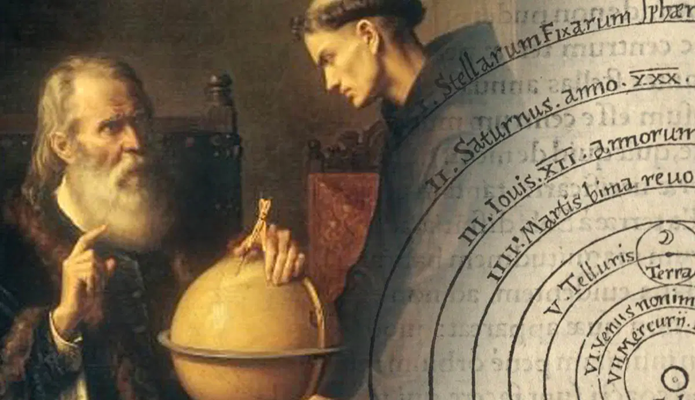
To listen to today’s reflection as a podcast, click here
The Italian scientist Galileo and the Catholic Church had a bit of a falling out in 1633.
Despite being acclaimed today as “the father of observational astronomy,” “the father of physics,” and even “the father of modern science,” Galileo was tried by the Inquisition and found “vehemently suspect of heresy.”
He was forced to recant his discoveries and spent the rest of his life under house arrest.
And you thought you had trouble getting people to believe in your new ideas.
For centuries Galileo has been Exhibit A in what has become a widely-embraced narrative in Western culture.
The narrative goes like this: The Church is obstinately opposed to truth and progress, and historically has thrown its weight around to punish those who dare to contradict its opinions. Furthermore, even when the evidence becomes overwhelming, it takes a very long time for the Church to come to its collective senses. John Paul II finally offered the Church’s apology to Galileo in 1992 – a mere 350 years after his death.
But there’s a lot more to this story than first meets the eye.
Galileo and the Church were enthusiastically on the same side. Both believed in God and both believed in Truth – the bedrock conviction that reality is always preferable to fantasy, and that what is Real can indeed be discovered by people of good will who choose to go wherever the evidence leads them.
Unfortunately both Galileo and the Church, in their respective spheres, were battling deeply entrenched ideas – ideas that ultimately proved to be false.
Galileo embraced heliocentrism – the radical new opinion that the sun is at the center of the solar system rather than the earth.
A great majority of scientists in Galileo’s day adamantly disagreed with him. What could be more obvious than the daily motion of the sun around our planet? Besides, the Egyptian philosopher Ptolemy had taught the centrality of the earth 1500 years earlier. The crushing weight of tradition and scientific opinion were firmly set against Galileo.
The Church was also up against a bad idea. Medieval Bible scholars had taken a rigid view of what we now call phenomenological language.
We still say, “The sun rises and the sun sets.” In truth, of course, it’s the earth that is moving with respect to the sun, not the other way around. We literally don’t take our own language literally. Nor should Bible students conclude that Scripture teaches that the earth is flat or lies at the center of the solar system. Phenomenological language should not be confused with scientific affirmation.
Belief in false ideas – one embraced by the scientific establishment, the other by religious traditionalists of the 17th century – doomed Galileo.
Science quickly realized Galileo had been right. And so did religious authorities, notwithstanding a rather delayed official apology from the Vatican.
The old Galileo vs. God showdown is often used to support the modern false idea that Science loves Truth while the Church runs in the other direction with its fingers in its ears.
But there is no inherent conflict between science and spiritual conviction. God has provided two books for us to explore: the Book of Nature and the Book of Scripture. Galileo himself said, “God is known in nature by his works, and by doctrine in his revealed word.” As the old saying goes, “We consult the Bible to learn how to go to heaven, and consult Nature to discover how the heavens go.”
At any given historical juncture we may be momentarily perplexed as to how the two fit together. But “the truth meets at the top.” Both books are describing Reality.
So what should we do?
We must follow the clues. And go where the evidence leads. And offer honest answers for honest questions.
Above all, we must live in quiet confidence that the Creator and his creation are not telling different stories.
The universe is just way too fascinating for us to waste time on needless conflicts.
